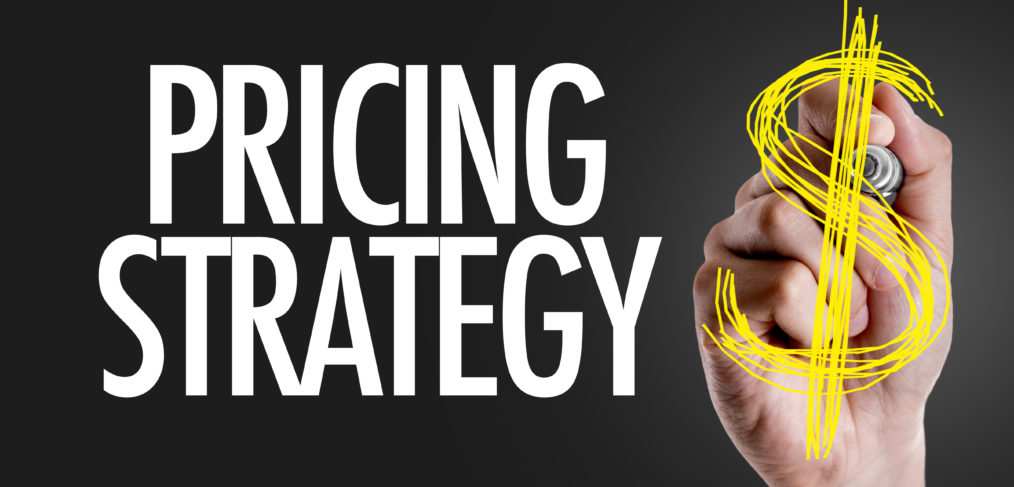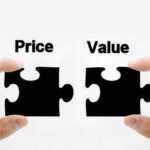Properly pricing products and services is always something of a challenge because it seems that everyone has a different view on the matter. Also, good pricing is both an art and a science which means that different personalities approach the topic entirely differently. Executive A picks a number out of his/her head, proclaiming, “This is the most customers will pay.” Executive B brings out the spreadsheets and says, “After careful market and competitive analysis, I believe we should price our product at X.”
The entire point of the pricing exercise is to maximize revenue vs. cost. In other words, you want to bring in as much profitable revenue as possible. As an example, when I ran marketing for a large B2B software company we had a standard site (perpetual) licensing model. Perceiving that we were leaving money on the table, we instituted a volume-based pricing model, based on the number of transactions that executed through the system. This had a dual positive impact. First, it let smaller companies use our software to help compete with larger players. Second, it gave us bigger upside with our enterprise accounts. A win/win for our clients and us.
Pricing Realities
As with the above example, companies can make a real impact on their top- and bottom-lines with effective pricing. However, first understand some of the pricing basics:
It’s about profit, not volume. There are many companies that price in such a way to maximize profit, not volume. Let’s say your cost of goods is $50. Pricing at $100 gives you a gross margin of $50 per unit. Perhaps at this price point, you can produce and sell 10,000 units, giving you a profit of $500K. Alternately, you price the product at $150, giving you a margin of $100 per unit. By selling only 75% as many units (7,500), you produce a profit of $750K, 50% larger than with the lower-priced example.
Buyers don’t care about your costs. The cost-plus-markup model may work for certain areas like government contracts, but it is not well known or accepted among commercial buyers. They not only don’t care what your costs are, they may not believe it if you tell them.
Pricing is highly subjective, depending on factors like context, competition, and demand vs. supply. Patrons will pay far more for the same painting hung in an elegant art gallery than the local consignment store.
There is always a “risk vs. reward” equation. Regardless of what you are selling – product, service, outcome – every prospect considers whether the value (to them, not you) is worth more than the potential cost. And the cost is not just monetary, it also includes things like time, aggravation, danger, and embarrassment from making a bad decision. If the reward side of the equation doesn’t significantly outweigh the risk, you will lose the sale to a competitor, or just as likely, to a no-decision.
Emotions trump logic. There is an old saying in marketing and sales that people buy with emotion and justify the purchase with logic. This is why you buy the timeshare that every logical bone in your body tells you to walk away from. The salesperson knows how to appeal to the emotional hot buttons and throw a bunch of supposed facts out for you to justify the purchase. They are trained to not let you out of the door because once you go, logic will take over.
Pricing Strategies
Here are five ideas you can use to structure your pricing strategy for maximized revenue and profitability.
1. Raise your prices to increase revenue
I outlined a scenario above where greater profit can be generated by a higher price point, but there are also instances where you can raise sales volume by raising your price. On the B2B side, consulting firms with specialized expertise can charge more, and on the consumer side, certain artists and art dealers have seen big jumps in revenue by raising prices. The key to each scenario is that the buyer has no subjective way to judge pricing and may be more willing to buy at the higher price point.
2. Limit the number of options
Our tests have consistently shown that if you give the prospect too many options (choice “overload”) sales will go down. In fact, we’ve shown that the ideal number of choices for a mid-priced B2B product/service is three. Here is a really good article on choice overload.
3. Offer tiered pricing
While choice overload is deadly, prospects respond well to tiered options. Always highlight the value of lower-priced tiers via “anchoring” – list a significantly higher priced upper-tier option. Interestingly, if you offer low-, mid- and upper-tier options, don’t be surprised if 50-60 percent of your sales come from the middle tier.
4. Consider “all you can eat” pricing
Unlike transactional pricing (by unit, volume, time, etc.) the all you can eat model provides an unlimited amount of something over a certain time period. The name comes from the restaurant industry where patrons can eat as much as they want (buffet style) for a fixed price. Skillshare.com has applied this concept to online learning. Instead of paying by the course, as you do with most e-learning companies, Skillshare charges a set monthly fee which allows customers to take as many classes as they like.
5. Set the price as “free”
Our company has had great success with product or cloud services offered on a free-trial or “freemium” basis. The free-trial offer is one where the user has access at no charge during a certain time period, say 14 days or 30 days. After that time, the user loses access or starts paying. The secret to this model is having a great conversion process to convince the individual to use and then pay for the product. In the freemium model, there is no time limit, but the initial product is limited in features, scope, etc. The idea is to get them using the product, then convert to the paid upgrade because they need more functionality, data, or whatever.
Your pricing strategy doesn’t have to be an entirely emotional or by-the-numbers exercise. The most important thing is to offer quality products/services and ensure that customers perceive that doing business with you is on the right side of the “risk vs. reward” equation.
For more information on small business pricing ideas click here.
Guest post by: Christopher Ryan CEO of Fusion Marketing Partners and Center for Business Modeling. Chris is a SCORE colleague and a marketing and sales maven. We are super fans of each other’s work. This post was originally published by Chris on his blog in June of 2019.












